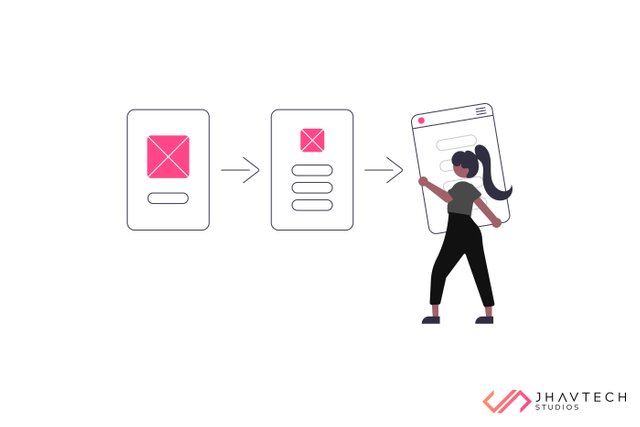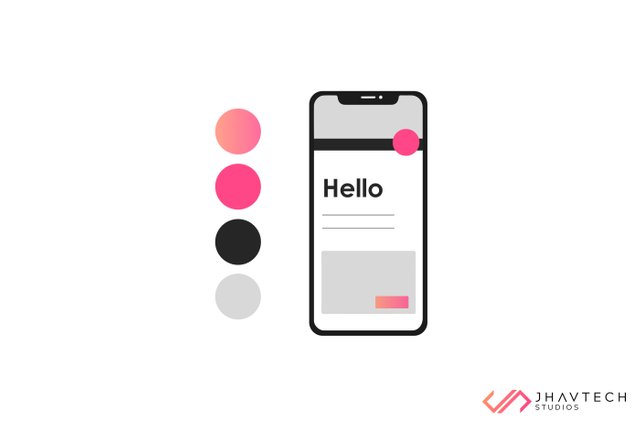Top Mobile APP UX Design Practices to Delight Users

We are living in a digital world where mobile devices have increasingly become daily essentials. According to a report by Statista, there are currently 3.48 million Android apps and 2.22 million iOS apps in the market. But despite the staggering figures, not everyone finds every app captivating. The ones that are user friendly turn out as the most useful apps that people find compelling.
This means creating an engaging UX design is a top priority for mobile app UX designers. This is particularly true since UX problems like low discoverability, complex registration process, intricate navigation, and other issues get an outright rejection from potential users.
What is Mobile UX Design?
Put simply, mobile app UX design is the process of making an intuitive experience for end users. It is the subjective experience they encounter while using an app, meaning it can be either good or bad, delightful or atrocious. You therefore need to be extra careful while designing the user experience for your app, as UX is all about how users feel while using it.
The Best Practices for Mobile UX Design
When it comes to mobile app design, pay attention to the following tips that contribute to a good overall customer experience. It is projected that by next year, the number of mobile device users worldwide will reach 6.9 billion. This highlights the fact that you must put a premium on the top mobile UX design practices.
Make Navigation as Simple as Possible
The navigation of your mobile app is the user’s direct interaction with the design. It is structurally flawed if users encounter navigational difficulties. A good mobile UX design helps users to easily move from one screen to another. Always bear in mind that amazing features and unique content are of little to no value if users cannot find them.
• Try to minimise the onboarding learning curve with commonly used navigation patterns and UX design elements
• Offer a single-click back to the Home screen
• Never hide the search function in a menu
• Make the images crystal clear so users don’t need to zoom in

Break Down User Actions
Respond to a major action per screen, like signing in, selecting an item, confirming an action, among others. You can make it distinct by using a different color or format. If there is any less important step, try to prevent it from competing with the more important ones.
Always use focused calls-to-action (CTA) to show users the way forward. Don’t waste the space above the fold with extraneous content. Make it easy to request for assistance and provide feedback as well as real-time confirmation that shows something is happening.
Minimalism is Key – ‘Less is More’
Minimalism never goes out of trend in the realm of mobile app design. Since users are after ease of use and functionality, you should not clutter screens with lots of interface elements. Try to strike a balance between usability and a basic design.
There are essential things to remember when implementing a minimalist UX design:
• Only include important content - Content is the primary focus and the interfaces can be simplified by getting rid of all the elements that are not going to help users complete a task.
• Use of flat design – This means everything is kept to a minimum, making your app aesthetically pleasing and fully functional at the same time.
• Design contrast – This refers to the application of high contrast elements to make them standout without having to exert a lot of effort.
Use the Appropriate Font
Choosing the appropriate font is as important as building the visual components of your overall design. Using the wrong fonts can ruin the overall look and feel of your app. Pick a font that works well in different sizes and weights.
Tech giants like Apple and Google recommend that you keep the font at 12 points. This helps users read the text without zooming in. It also helps them keep their mobile device at a comfortable distance for viewing.
Refrain from Using Random Colors
The limited use of the color palette is a crucial visual element of minimalist design. A well-thought-out color palette can turn a design from ‘good’ to ‘great’ while an ill-conceived color palette can detract from users’ overall experience and even hinder their ability to use your app.
The color palette of your mobile app links different features, but working principles stay the same:
• Showcase your brand’s color palette
• Refrain from using glowing or overly vibrant shades
• Refrain from using colors used by your competitors
• Ensure proper color contrast ratio

Make Buttons Easily Clickable
Always keep in mind that small touch controls are a bane to users. They may save you a little screen space but they do detract from the user experience. Note that each operating system has specific button design choices for improved UX, and in most instances, buttons of 44px width and 44px height work well on every OS and mobile device.
Provide for Personalisation
Enhance your mobile UX by maximising the benefits of data. Make the most out of the data about users’ location, previous searches, and past purchases to come up with special offers. Utilise the benefits of push and in-app notifications to delight users with tailored experiences.
Without a doubt, personalisation is at the core of user experience efforts. It offers what’s relevant to users or what they are interested in, keeping any unrelated content away.
Parting Words
Good UX means making it as simple and easy as possible for users to do what they want to do on your app—this is the ultimate goal. You can therefore leave a lasting impression among your app users by giving them the best user experience possible. You can apply the aforementioned mobile UX design best practices to achieve this, but don’t restrict yourself and keep trying new approaches until you find the one that works best for your target audience.